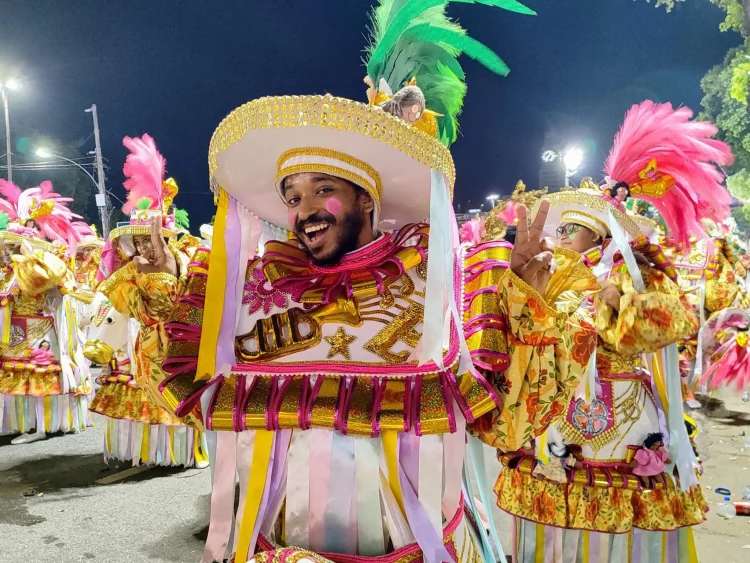India and Brazil, two of the most vibrant countries on the planet, have a deep cultural heritage shaped by centuries of traditions, history, and spirituality. Their festivals are not merely events on the calendar but integral expressions of identity, offering travelers an opportunity to dive into the heart of each nation’s unique social fabric. From the electrifying rhythms of Brazil’s Carnival to the colorful lights and spiritual fervor of India’s Diwali, these festivals invite the world to experience not just celebrations, but ways of life that have endured and evolved for millennia. Whether you’re seeking cultural immersion or a spectacular travel experience, these festivals ignite the spirit of travel in ways few other events can.
Introduction: The Rich and Colorful Festivals of India and Brazil
Festivals are more than just holidays in India and Brazil—they are powerful manifestations of the values, stories, and customs that shape the people’s identities. In India, festivals range from grand, national celebrations to intimate, regional events that honor the country’s diversity. Brazil, on the other hand, is home to some of the most exuberant and world-famous festivities, blending indigenous, African, and European influences into a stunning display of dance, music, and colorful pageantry.
For travelers, these festivals offer an unparalleled chance to experience the pulse of a country’s culture, to engage with locals, and to witness the extraordinary devotion that goes into creating these magical celebrations. The sheer scale of participation in festivals like Diwali in India or Carnival in Brazil is staggering, drawing millions of visitors and leaving an indelible mark on anyone fortunate enough to witness them firsthand.
Key Festivals: Exploring Diwali, Carnival, and Other Key Celebrations
Diwali: The Festival of Lights
In India, the most celebrated and widely known festival is Diwali, also known as the Festival of Lights. Diwali symbolizes the victory of light over darkness, good over evil, and knowledge over ignorance. The festival has roots in Hindu mythology, marking the return of Lord Rama to his kingdom after 14 years of exile and the defeat of the demon king Ravana.
For travelers, Diwali offers an extraordinary opportunity to experience India’s spirituality, warmth, and sense of community. The country transforms into a dazzling kaleidoscope of colors and lights as homes and streets are adorned with oil lamps, fairy lights, and candles. Fireworks light up the night sky, and markets are flooded with sweets, flowers, and decorations. The joyous atmosphere is palpable, and the festival brings together people from all walks of life, united in celebration.
Cities like Varanasi, the spiritual heart of India, and Jaipur, known for its grand celebrations, offer travelers a deeper connection to the festival. In Varanasi, the ghats along the Ganges are lit up with thousands of diyas (small oil lamps), creating a breathtaking sight that symbolizes purification and renewal. In Jaipur, visitors can take part in elaborate rituals, witness traditional dance performances, and explore the historic forts and palaces, which come alive with the festival’s energy.
Carnival: A Riot of Color, Dance, and Music
While India celebrates Diwali with a solemn reverence, Brazil’s Carnival is the epitome of exuberant celebration. Held annually before Lent, Carnival is Brazil’s largest and most anticipated festival, attracting millions of tourists from around the world. It is an explosion of color, rhythm, and joy, with parades, samba schools, street parties, and elaborate costumes that showcase Brazil’s cultural diversity.
The Rio Carnival is the crown jewel of this festival, drawing both locals and international visitors for its grand parades in the Sambadrome. The samba schools that compete during Carnival put on extravagant performances, where dancers in feathered costumes move to the beat of drums and brass instruments. The parade is a mesmerizing spectacle of music, dance, and vibrant costumes, and it’s hard not to be swept away in the infectious enthusiasm of it all.
But Carnival in Brazil is not limited to Rio. Cities like Salvador, Recife, and São Paulo offer their own unique twists on the celebration, with street festivals, blocos (street parties), and performances that blend local Afro-Brazilian culture, folklore, and traditions. Salvador, in particular, is renowned for its vibrant and lively street parties, where the rhythms of axé, samba, and reggae mix in a joyful cacophony.
Holi: The Festival of Colors
Holi, another important Indian festival, celebrates the arrival of spring and the triumph of good over evil. It is famous for its wild, color-filled celebrations, where participants throw powdered pigments at one another in a spirited display of unity and joy. Holi is celebrated in cities across India, but Varanasi, Mathura, and the streets of Delhi offer some of the most memorable experiences. Travelers should embrace the chaos, cover themselves in vibrant colors, and join the masses in dancing, singing, and celebrating life.

Festa Junina: The Heart of Brazilian Rural Life
Festa Junina, or the June Festival, is another beloved Brazilian celebration, particularly popular in the rural northeast. It marks the end of the harvest and is rooted in Catholic traditions honoring saints like St. John. The festival is filled with traditional food, folk dances like the quadrilha, and vibrant costumes resembling country life. While Rio and São Paulo host grand celebrations, the real charm of Festa Junina lies in small towns across the northeast, where travelers can experience authentic local traditions and dances.
Cultural Significance: How These Festivals Connect with the Local Culture and Traditions
Festivals are windows into the soul of a culture. They reflect not only the history and mythology of a place but also its values and collective memory. In India, Diwali’s emphasis on the triumph of good and the importance of light mirrors the country’s deep spiritual traditions. The rituals surrounding the festival, such as prayer offerings and the lighting of diyas, offer a glimpse into the reverence for gods, family, and community that permeates much of Indian culture.
Likewise, Brazil’s Carnival is more than just a party; it is a powerful expression of Brazilian identity. Rooted in African, indigenous, and Portuguese influences, Carnival celebrates diversity and resilience, showcasing Brazil’s ability to blend cultures into something uniquely its own. The samba dance, the heartbeat of Carnival, traces its roots to African slaves, and its evolution is a testament to the endurance and creativity of the Brazilian people.
These festivals also play a crucial role in reinforcing local community ties. In India, Diwali is a family-centric festival, where people return home to be with loved ones, strengthen social bonds, and share in the joy of renewal. Similarly, Carnival in Brazil is a community event, where even people from the favelas (slums) participate in samba school parades, bringing people together across class and socioeconomic divides.
Top Destinations: Where to Experience These Festivals Firsthand and Make the Most Out of Your Travel
India:
- Varanasi: The spiritual epicenter of India, Varanasi is a must-visit during Diwali. The Ganges River, the temples, and the ghats light up in an otherworldly display, offering an experience that transcends the ordinary. Participating in the evening aarti ceremony on the banks of the Ganges is a powerful way to connect with the spiritual essence of Diwali.
- Jaipur: Known for its grand forts, palaces, and royal heritage, Jaipur offers a unique blend of tradition and celebration during Diwali. The city’s markets sparkle with lights and decorations, while the streets hum with music and dance. Don’t miss the fireworks and the traditional lighting of diyas outside the City Palace.
- Mathura: The birthplace of Lord Krishna, Mathura hosts a spectacular Holi celebration that is truly iconic. The streets are filled with people throwing colors, and the air is heavy with joy and excitement.
Brazil:
- Rio de Janeiro: Rio’s Carnival is legendary, and there’s no better place to experience its full scale and grandeur. Watch the samba school parades in the Sambadrome, or join in the vibrant street parties that take over the city.
- Salvador: Salvador is the heart of Afro-Brazilian culture, and its Carnival is rich with African rhythms, dances, and traditions. The experience here is less commercialized than in Rio and offers a more authentic taste of Brazilian Carnival.
- Recife and Olinda: Known for their unique celebrations, these two cities in northeast Brazil host Carnival with a local flair. Olinda’s streets are filled with colorful costumes, giant puppets, and traditional frevo and maracatu music.
Conclusion: Festivals as Bridges of Culture and Travel
India and Brazil’s festivals do more than just entertain—they offer invaluable cultural experiences that shape the spirit of travel. Whether it’s Diwali’s spiritual warmth or the infectious energy of Brazil’s Carnival, these festivals invite travelers to engage deeply with local traditions, making them more than just spectators. For those seeking a truly immersive experience, these festivals provide a chance to connect with the history, culture, and people in a way that no ordinary tourist itinerary can match. So pack your bags, embrace the colors, the rhythms, and the joy—and let the festivals of India and Brazil ignite your wanderlust like never before.





















